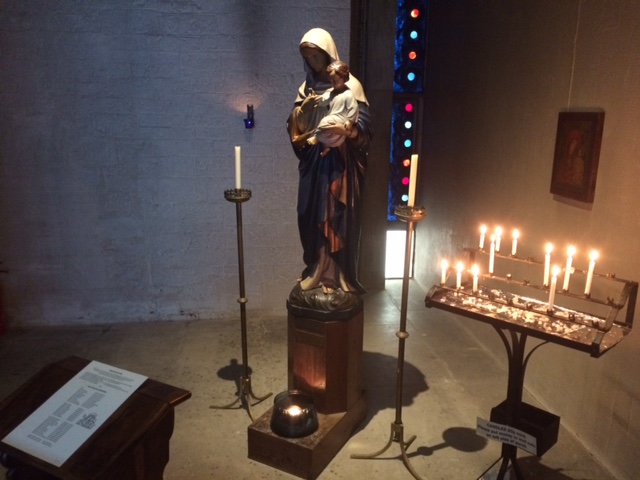All Saints - The New Church
The Old .......
The 'Old' church, a product of catholic renewal and the Oxford Movement, was consecrated on 8 June 1868 by the Bishop of Gloucester and Bristol. This 'great building stood, with great dignity, and loved by people, the world over, who cherished the Catholicity of the Church of England'.
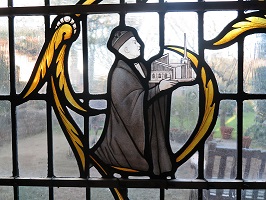
Then on the night of 2 December 1940 an incendiary bomb destroyed the fabric of the chancel, the roof of the nave and seriously damaged the masonry. The work of the distinguished architect George Edmund Street was destroyed.
And the 'New'.....
From the ashes of the old the 'new' church emerged and was consecrated on 1 July 1967. It is the work of the architect Robert Potter. And just as the old church reflected the style and thinking of catholic renewal, so too the new building reflects the more modern ideas of liturgical thinking.
All Saints is an iconic building which is a fascinating mix of the old and the new. The powerful stained-glass windows that surround the church (the work of the artist John Piper) are an artwork of National Significance.
The blend of materials used, concrete, wood and fibreglass – creates a space that combines elements of tradition, the ‘old’ baldachino and the ‘modern’ use of materials.
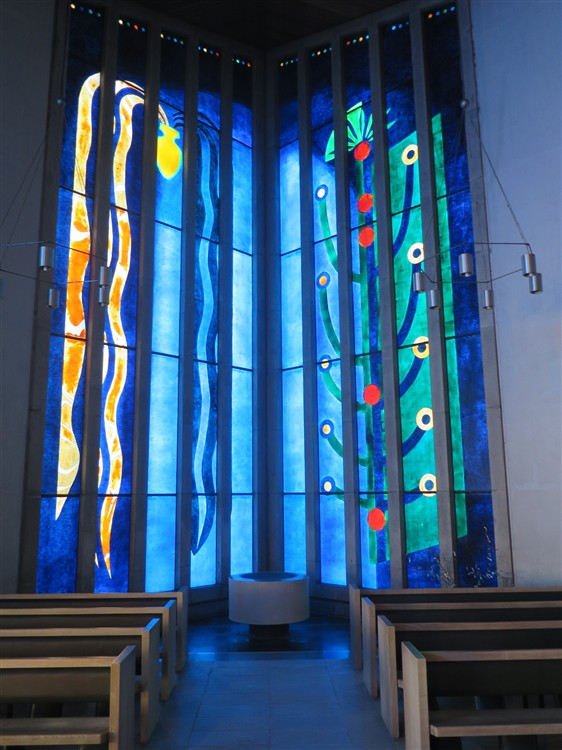
The very structure of the church represents modern liturgical thinking – the altar is advanced and near the worshipping people, the boundaries between choir and sanctuary are indistinct, and the baptistry is perfectly balanced with the sanctuary – East and West. As you stand in the church the sense of ‘beyond’ seeps out of every pore of the building – it truly is a Sacred Space.

A Short History
All Saints Clifton was founded by a group of lay people in the 1860s. It was a product of the Oxford Movement, which blended a return to catholic liturgy, with a focus on the social demands of people in need. All Saints provided ‘free seats’ in church; with a rich pattern and depth of worship – music, ritual, diversity, and openness of thinking not available in Clifton, or indeed Bristol.
On 2 December 1940 the church was destroyed by enemy action during the Bristol Blitz. The main building today is the ‘New Church’ designed by the architect Robert Potter and consecrated on 1 July 1967.
The Sanctuary
The separation between sanctuary and nave is gentle; the sanctuary is open to all. On the left (North) there is an Aumbry (Tabernacle, designed by FC Eden). This is a recessed cupboard in which reserved sacrament is kept. This is used for home communions but is also an outward and visible sign of the actual presence of Our Lord in this place.
On the right of the sanctuary is the credence (constructed of Seathwaite Fell Sandstone c.450 million years old), the shelf on which the vessels and elements of the Eucharist are kept prior to their being consecrated and the pulpit (or ambo), the platform from which the Gospel is preached, and directly in front of this is the lectern, upon which the Gospel resides during worship.
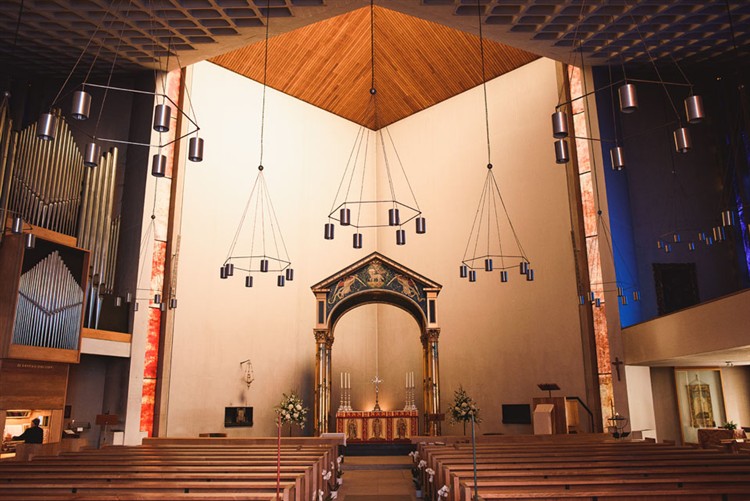
Baldachino and High Altar
The High Altar is made of Jurassic Portland Limestone from Worth Maltravers, some 200 million years old. If you come and look closely at this altar you can see the fossils it contains.
Above this is the canopy, a Baldachino (officially an ‘architectural ciborium’), designed by Randoll Blackling. Look at the design, the meaning of the images and the words (and perhaps identify the small error). This was created for the ‘New Church’ and was a feature that Potter needed to incorporate into his overall architectural design.
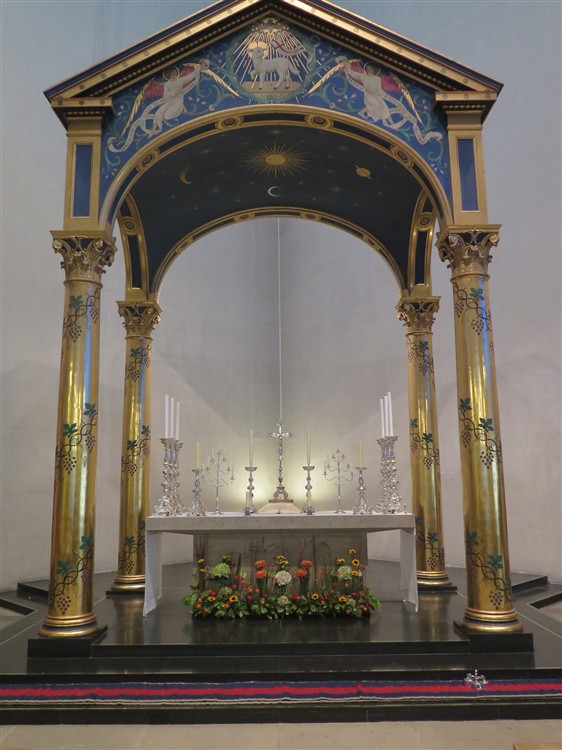
The Organ
The centrality of music in worship was part of the design requirement demanded of Potter. The organ, positioned adjacent to the choir, is designed on traditional 18th C principles and represents an extraordinary element in the musical tradition of All Saints. It has tracker action, with open foot voicing of the pipes, low wind pressure and slider chests and was made by J Walker and Sons. It is considered to be one of the finest examples of this type of organ within the UK. Organists from around the world visit to play and hear its sound.
The Lady Chapel
Bathed in blue light, the Lady Chapel positioned in the balcony, gives a tremendous view of the whole church. The chapel also provides a place for reflection and meditation.
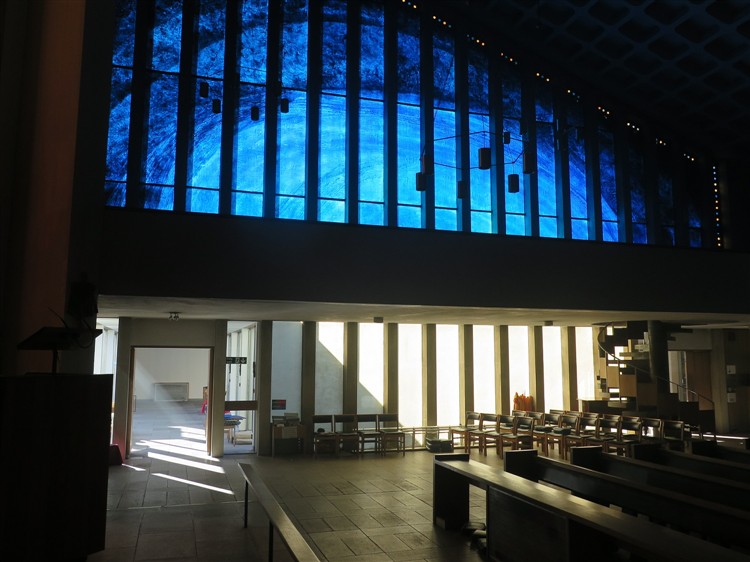
Shrine of Our Lady: the Blessed Virgin Mary
Nestled between the organ and the sanctuary is the shrine of the Blessed Virgin Mary. Every day, from the moment the church opens, visitors come into this Sacred Space. They often light a candle beside the Statue of the Virgin so that their prayers mingle with those of all the Saints, the Blessed Virgin, those who have gone before us and those who live in this world now.
